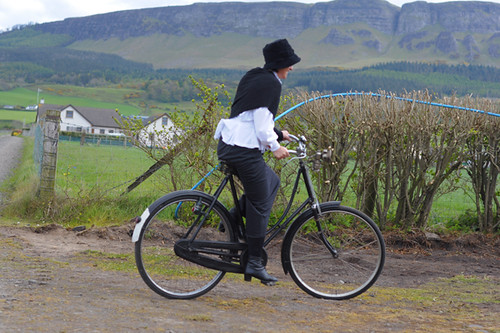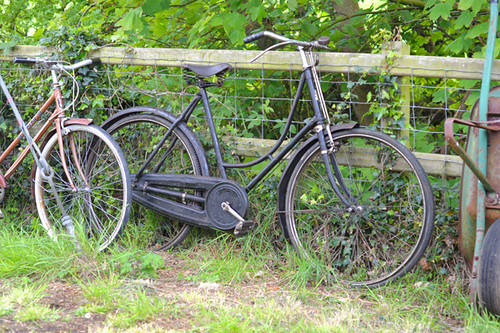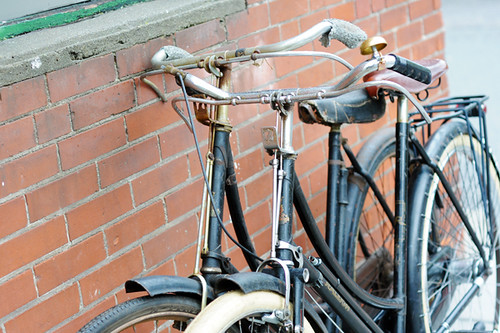
Monday Mailbox is a weekly post dedicated to questions received over email. Here is one, for a nice change of pace:
It's been fun discovering what to call different styles of bikes through your blog... diamond frame, step-through, loop frame, mixte, truss frame, Frascona curve! But what exactly is a High Nelly?
I have wondered about this myself, especially about the term's origin.
Used predominantly in the UK and Ireland (and not very common anymore), in a general sense "High Nelly" describes upright bikes. More often than not, the term refers specifically to women's bikes, and particularly to vintage ones. So, for instance, an old fashioned loop frame with swept-back handlebars up higher than the saddle might be called a High Nelly - similar to what an omafietsis to the Dutch.

But in Northern Ireland last summer, I was treated to a more detailed explanation. I was told that originally, "high nelly" referred to a specific style of a woman's bicycle frame, where the head tube was extended considerably past the height of the seat tube. This ensured that the handlebars could be set up as high as possible, for a fully upright and ultra-ladylike position. Apparently, only frames thus constructed are true high nellies.

Interestingly, in manufacturing its popular Lady's Tourist model, some time in the 1940s Raleigh switched from the original extended headtube design to one where the headtube was more or less level with the seat tube. The measurements of my 22" 1973 DL-1 frame are almost identical to the measurements of my 22" 1936 Lady's Tourist frame, save for this aspect and the resulting difference in posture.So, going by the explanation above, only the very early Lady's Tourists can be considered high nellies, whereas the later DL-1s (as well as most other post-war English 3-speeds) are not. And according to the same definition, lots of modern bikes can be considered high nellies, since extended headtubes are now quite popular.
Unfortunately, I cannot find any written information about the origins of the term, so I can't cite my sources beyond "conversation with collectors." And sadly, who exactly this Nelly was, for whom I assume the style of bicycle was named, remains a mystery.
No comments:
Post a Comment